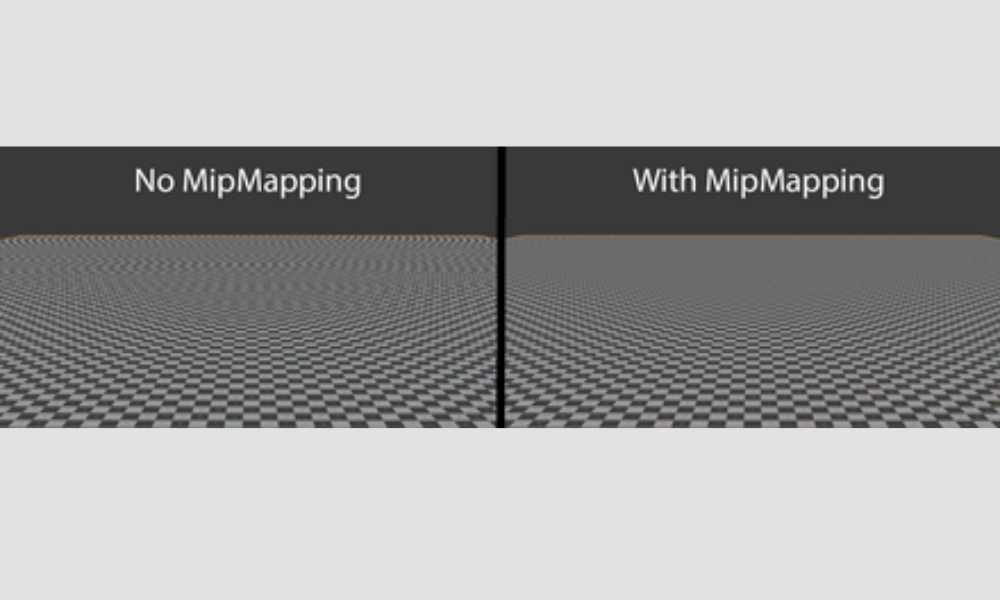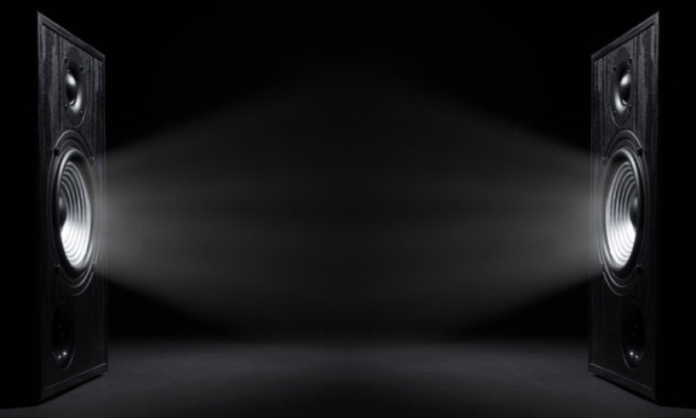Are you passionate about audio and want to improve the quality and performance of your sound output ? Have you heard of mip mapping , but you don't know exactly what it is or how to use it? Don't panic, we are here to enlighten you! In this article, we will explain to you what mip mapping is, how it works and how to use it for audio in 2023. You will discover the advantages, disadvantages and tips for performing mip mapping for audio with the best tools and methods available . Ready to optimize your audio rendering with mip mapping ? So, follow the guide!
MIP mapping: what is it actually?

Mip mapping is a technique which consists of creating lower resolution versions of an original texture, in order to improve the visual quality and performance of the graphics rendering. The term mip comes from the Latin multum in parvo , meaning " many in little ".
Mip mapping is used to avoid aliasing and moiré effects that can appear on textured surfaces when viewed from a distance or at a low angle. Indeed, if we use the original texture for all levels of detail, we risk oversampling or undersampling the texture , which results in visual artifacts. Mip mapping allows you to choose the version of the texture best suited to the distance and orientation of the surface relative to the camera, using filters to smooth transitions between levels of detail
Mip mapping is widely used in video games, flight simulators, 3D imaging systems and GIS ( geographic information systems ) software for texture filtering. It is also possible to use mip mapping for audio , creating lower resolution versions of an original audio, in order to improve sound quality and audio rendering performance
How does mip mapping for audio work?

The principle of mip mapping for audio is similar to that of mip mapping for textures. It involves creating lower resolution versions of an original sound, by reducing the sampling rate, or number of bits per sample, to reduce sound file size and loading time. Each version of the sound, or level of detail, represents what the sound should sound like at a certain distance or volume from the listener. By using filters , levels of detail help give a more natural representation of how sounds blend or fade when they are far away or quiet.
Mip mapping for audio can be used to:
Level of Detail (LOD)
This involves adapting the sound resolution according to the distance or volume from the listener , in order to save resources and avoid sound distortions. For example, if a sound is very distant or very quiet, there is no need to use the original version of the sound, which may be too rich in frequency or dynamics. A simpler version of the sound can be used, which contains less information, but is sufficient to give a general impression of the sound
Improved sound quality

This involves using mip mapping to avoid aliasing and quantization effects that can appear on sounds when they are sampled at a lower resolution than the original sound. Aliasing occurs when frequencies greater than half the sample rate are present in the original audio, resulting in interference and harmonic distortions . Quantization occurs when the number of bits per sample is insufficient to accurately represent the amplitude of the sound signal, resulting in noise and loss of dynamics. MIP mapping allows frequencies that are too high or too low to be filtered before reducing the sound resolution, in order to preserve sound quality and avoid these artifacts.
How to use mip mapping for audio in 2023?

To use mip mapping for audio in 2023 , you need to have software or hardware capable of creating and managing the levels of detail of the sound. There are several tools and methods for performing mip mapping for audio , depending on the needs and objectives of the project. Here are some examples :
- MipMap Audio software is a tool that allows you to create lower resolution versions of an original audio, using different filtering and reduction algorithms . It also allows you to compare sound versions, listen to them and export them in different formats. It is compatible with WAV, MP3, OGG, FLAC and AIFF formats .
- Audacity software is a free and open source audio editor that allows you to perform mip mapping for audio manually , using the sample rate change, format change and filtering functions. It also allows you to apply sound effects, mix and edit sounds. It is compatible with WAV, MP3, OGG, FLAC and AIFF formats.
- The MipMap Audio Processor hardware is a device that allows you to perform mip mapping for audio in real time, using a dedicated processor and integrated memory. It allows you to manage up to 16 audio channels simultaneously, with different levels of detail and different filters. It is compatible with PCM, ADPCM, MP3 and OGG formats .
FAQs
Here are some frequently asked questions about mip mapping for audio:
What is the difference between mip mapping and LOD?
Mip mapping is a technique which consists of creating lower resolution versions of an original texture or sound, in order to improve the visual or sound quality and the performance of the graphic or audio rendering . LOD (level of detail) is a concept which consists of adapting the geometric or sonic complexity of an object according to its distance or its volume in relation to the camera or the listener. Mip mapping can be used as a method to achieve LOD for textures or sounds.
What are the benefits of mip mapping for audio?
The advantages of mip mapping for audio are:
- It helps avoid aliasing, moiré, quantization and distortion effects that can appear on sounds when they are sampled at a lower resolution than the original sound.
- It allows you to adapt the sound resolution according to the desired level of detail, in order to save resources and avoid overloads.
- It helps improve sound quality and audio rendering performance , using filters to smooth transitions between levels of detail.
What are the disadvantages of mip mapping for audio?
The disadvantages of mip mapping for audio are:
- It requires additional storage space to create and manage audio detail levels .
- It requires specific software or hardware to perform and manage mip mapping for audio.
- It requires a certain mastery and knowledge of the principles and parameters involved in mip mapping , in order to obtain the best possible result.
How to choose the right filter for mip mapping for audio?

The choice of filter for mip mapping for audio depends on the type of sound, the target resolution and the desired effect. There are different types of filters, such as low pass, high pass, band pass, notch filters, etc. Each filter has its own characteristics, such as cutoff frequency, slope, phase, etc. The choice of filter should be made based on the frequency content of the original sound, the target resolution and the desired effect. For example, if the original sound contains very high or very low frequencies that are not audible or useful at the target resolution, a low-pass or high-pass filter can be used to eliminate them. If the original sound contains frequencies that are important or characteristic at the target resolution, a bandpass or notch filter can be used to preserve or enhance them. It is also necessary to pay attention to the impact of the filter on the phase of the sound signal , which can affect the spatial perception of the sound.
How to choose the right resolution for mip mapping for audio?
Choosing the right resolution for mip mapping for audio depends on the desired level of detail, sound quality and performance of the audio rendering. The resolution of a sound is defined by the sampling rate and the number of bits per sample. The sampling rate corresponds to the number of samples per second that make up the sound signal. The number of bits per sample corresponds to the number of bits used to represent the amplitude of each sample . The higher the resolution, the more faithful the sound to the original, but the more space it takes up and the more resources it requires . The lower the resolution , the more simplified the sound, but the more it risks losing quality and precision. Choosing the right resolution must be made based on the desired level of detail, sound quality and audio rendering performance. For example, if the sound is very far away or very faint from the listener, a low resolution can be used, which is sufficient to give a general impression of the sound. If the sound is close or loud to the listener, a high resolution can be used, which allows all the details and nuances of the sound to be reproduced.
What formats are compatible with mip mapping for audio?
The formats compatible with mip mapping for audio are the formats that allow you to store and manage several levels of detail of a sound in the same file. There are different formats compatible with mip mapping for audio , such as WAV, MP3, OGG, FLAC and AIFF. Each format has its own advantages and disadvantages, such as quality, size, compression, compatibility, etc. The choice of format must be made according to the needs and objectives of the project. For example, if the project requires high sound quality and low compression, we can use WAV or FLAC format, which are lossless formats. If the project requires low file size and high compatibility, one can use MP3 or OGG format, which are lossy formats .
Conclusion
Mip mapping is a technique which consists in creating inferior resolution versions of an original texture or sound, in order to improve visual or sound quality and performance of graphic or audio rendering. Mip mapping makes it possible to avoid the effects of aliasing, moiré, quantification and distortion which may appear on surfaces or sounds when seen or heard from afar or from a weak angle . Mip mapping also makes it possible to adapt sound resolution according to the desired level of detail, in order to save resources and avoid overloads.
Mip mapping is widely used in video games, flight simulators, 3D imaging systems and GIS software for texture filtering. It is also possible to use mip mapping for audio, creating lower resolution versions of an original audio, to improve sound quality and audio rendering performance.
To use mip mapping for audio in 2023 , you need to have software or hardware capable of creating and managing the levels of detail of the sound. There are several tools and methods for performing mip mapping for audio, depending on the needs and objectives of the project.
MIP mapping is a technique that offers many benefits for audio in 2023, but also requires some mastery and knowledge of the principles and parameters involved. Among these parameters, there are also the accessories used to listen to or produce sound. This is why we recommend that you equip yourself with 4 cutting-edge accessories that every gamer should have to take full advantage of mip mapping for audio .




